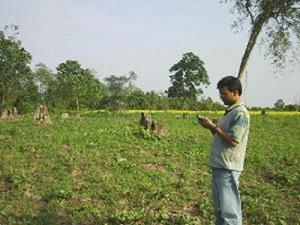Anup Saikia
Ultimately the objective is to reduce HEC in the area, since it cannot be eliminated altogether.

Habitat destruction is a universal conservation problem and is one among several causes underlying human elephant conflict (HEC) in Assam. With population increase, the question of human space infringing upon the territory and space of elephants emerges; predictably lives are lost on both sides in addition to property, crops and so on. This study seeks to assess HEC against the background of habitat loss in Sonitpur district, Assam, India particularly the northern portions, where dimensions of the problem have reached a critical point. Unfortunately an accurate database identifying HEC sites, encroached points by human settlements and areas of severe habitat loss is lacking although this serves as a starting block to successful planning and implementation of conservation strategies.

This study will generate such information using field observations and global positioning system (GPS) measured locations supplemented by remote sensing data; to initiate effective and tenable solutions by the state government , measures that are based on authentic and up-to-date ground truthing. The information generated will be integrated into a geographic information system (GIS) so that detailed mapping of the area can be generated at the same time a spatial database of conflict locations will be possible. Associated dimensions of the problem such as the location of encroacher settlements, mapping corridors/tracks of elephant movement (using visual observations, and not radio tracking although the latter is much more accurate), and identifying habitats in need of immediate protection will also be undertaken.

Questionnaires along the lines of an IUCN study be circulated and primary data generated from fieldwork so as to gauge HEC.